Ever taken a bite of your favorite snack only to feel a sudden itch, a tight throat, or a wave of nausea? You’re not alone. Most people wonder, “How long does a food allergy reaction last?” The answer isn’t one‑size‑fits‑all, but the good news is that we can break it down into clear, manageable pieces. Below you’ll find a friendly guide that walks you through the typical timelines, the factors that stretch or shrink those windows, and the steps you can take to stay safe.
Quick Overview
| Reaction Severity | First Symptoms Appear | Typical Duration* | Possible Biphasic Window |
|---|---|---|---|
| Mild (hives, itching, mild stomach upset) | 5‑30 min (often < 1 hr) | 30 min – 4 hrs (sometimes up to 24 hrs) | 1‑12 hrs after first wave |
| Moderate (vomiting, wheezing, lip swelling) | 5‑60 min | 1‑6 hrs | 2‑72 hrs |
| Severe – Anaphylaxis | <5 min (seconds possible) | 2‑6 hrs + possible delayed phase up to 72 hrs | 8‑72 hrs (biphasic anaphylaxis) |
*”Typical duration” reflects data from Verywell Health (2025) and Everlywell (2023).
Biphasic Basics
Ever heard the phrase “the trouble isn’t over until it’s over”? That’s the idea behind a biphasic reaction. After an initial wave of symptoms resolves, a second, sometimes milder, flare‑up can strike hours later—often 8‑72 hours after the first episode. It happens because the immune system can release a second surge of chemicals once the first wave subsides. If you’ve ever felt “fine” after an allergic episode only to have hives return the next day, you’ve experienced this phenomenon.
What Extends or Shrinks the Timeline?
Think of a food allergy reaction like a fire: the size of the blaze, the type of fuel, and how quickly you douse it all affect how long it burns. Here are the main “fuel” factors:
Amount of Allergen
The more of the offending food you ingest, the larger the immune response. A tiny dab of peanut butter might cause a brief itch, while a full‑size sandwich can trigger hours of swelling and trouble breathing.
Route of Exposure
How the allergen enters your body matters. Oral ingestion usually takes minutes to a couple of hours to show up, whereas an intravenous exposure (like a medication) can cause an immediate reaction within seconds. A personal story on Quora illustrates this perfectly—IV meds can ignite symptoms instantly, while capsules may linger for hours before the immune system notices.
Individual Sensitivity
Genetics, age, and co‑existing conditions (like asthma) shape how aggressively your body reacts. Some people experience “late‑phase” symptoms that might not appear until several hours after the allergen is gone.
Treatment Timing
Early administration of epinephrine dramatically shortens anaphylaxis duration and can prevent a biphasic episode. If you wait more than 5‑10 minutes, the reaction can linger longer and become harder to control. CityMD explains that swift epinephrine use is the single biggest factor in reducing reaction time.
Food Matrix
High‑fat meals can delay stomach emptying, which in turn delays allergen absorption. That means symptoms might show up later than you expect, stretching the “onset” window.
Mild vs. Severe Timeline
Below is a side‑by‑side look at what you can typically expect from a mild reaction and a severe one.
| Feature | Mild Reaction | Severe Reaction (Anaphylaxis) |
|---|---|---|
| Onset | 5‑30 min | <5 min (often seconds) |
| Peak Intensity | 20‑60 min | 2‑30 min |
| Resolution with OTC meds | 30 min‑4 hrs | 2‑6 hrs + monitoring |
| Need for Emergency Care | Rare (if isolated) | Always (EpiPen + 911) |
| Typical Follow‑up | Home observation 2 hrs | Hospital observation 4‑24 hrs |
How to Tell the Difference
- Is your throat tightening or voice sounding muffled? That’s a red flag for severe.
- Are hives limited to one spot and fading quickly? Likely mild.
- Do you feel dizzy, faint, or notice a rapid heartbeat? Call 911 immediately.
Tips to Shorten the Reaction Time
Even though you can’t control the allergen’s presence once it’s in your system, you can influence how long its impact lasts.
Immediate Steps
1. Stop eating the food right away. Even a single bite can keep releasing proteins.
2. Take an antihistamine if symptoms are mild and you have it on hand.
3. Use an epinephrine auto‑injector for any sign of moderate or severe symptoms.
4. Cool compresses for hives can bring down itching faster.
Medical Interventions
Doctors may prescribe corticosteroids or bronchodilators for prolonged cases, especially when airway swelling is a concern. Intravenous fluids are sometimes needed if blood pressure drops.
Home Care After the First Wave
Stay hydrated, keep a cool environment, and continue to monitor for any new symptoms. If you notice a second wave after the first has cleared, treat it as a new reaction—take another antihistamine and consider a second dose of epinephrine if the reaction escalates.
When to Call 911
It’s better to be safe than sorry. If any of the following happen, you should call emergency services immediately:
- Difficulty breathing, wheezing, or throat tightness.
- Swelling of lips, tongue, or face that’s spreading.
- Sudden drop in blood pressure (light‑headedness, fainting).
- Persistent hives and swelling after 2 hrs of antihistamine use.
- Any return of symptoms after they seemed to resolve (biphasic reaction).
According to the American Academy of Allergy, Asthma & Immunology, early activation of emergency services dramatically improves outcomes and can shorten the overall anaphylaxis duration.
Real‑World Stories
Sarah’s Peanut Panic – Sarah thought a tiny nibble of peanut butter would be harmless. Within minutes, she felt her throat close and hives appeared on her forearms. She used her epinephrine auto‑injector within 3 minutes, called 911, and was monitored for 6 hours. Because the epinephrine was administered quickly, her reaction subsided after about 90 minutes, and she avoided a prolonged biphasic episode.
Mike’s Shellfish Slip‑up – Mike ate a shrimp cocktail at a restaurant and felt a mild itch in his mouth. He brushed it off, thinking it was just a taste reaction. Two hours later, hives spread to his torso and his breathing became shallow. He finally took an antihistamine, but the reaction lingered for 5 hours and required a visit to urgent care. The delayed onset was due to a high‑fat sauce that slowed allergen absorption.
Both stories highlight the same lesson: knowing the typical food allergy reaction duration and acting promptly can change the outcome dramatically.
Bottom Line
Understanding the timeline of a food allergy reaction empowers you to make quick, confident decisions. Mild reactions usually fade within a few hours, while severe anaphylaxis can persist for several hours and may return up to three days later. Early use of epinephrine, awareness of your personal triggers, and a solid action plan are the best tools to keep the reaction window as short as possible.
We’ve covered the typical durations, the hidden factors that can stretch them, and the practical steps you can take to stay safe. If you’ve ever wondered how long your reaction should last, now you have a clear roadmap.
What’s your experience with food allergy reaction timelines? Share your story in the comments, ask questions, or let us know which part of the guide helped you the most. Together we can make allergy management a little less scary and a lot more informed.









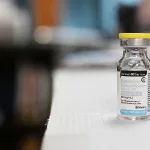
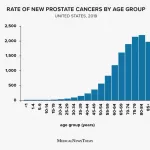
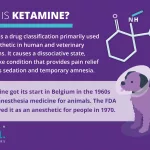


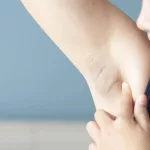

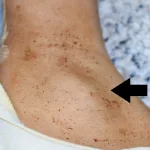
Leave a Reply
You must be logged in to post a comment.